Luther Burbank Home & Gardens
One hundred years ago, the name Luther Burbank was instantly recognized in a way that we are not familiar with today. Beginning in 1873 and continuing until 1932, 6 years after his death, more than 800 new varieties of vegetables, fruits, flowers, nuts and grains were bred, stabilized and introduced by him. He was much better known than the common term “Rock Star” today, because what he did transcended social, financial and political boundaries.
An American botanist, horticulturist and pioneering agricultural scientist, Luther’s name is often entangled with the emergence of bio-engineering and the patenting of plant life. This is truly unfair, as his work was dedicated to expanding the grower’s options, giving them improved varieties that grew, looked and tasted better and were more affordable to the consumer than what was available at the time. There were few thoughts of patenting the plants that he developed, as the Plant Patent Act was passed in 1930, 4 years after his death. He was more interested in getting the new varieties out into the world and into the hands of the growers and gardeners.
The number of varieties that he introduced is enormous, from his first discovery- the potato – to blackberries, plums, walnuts, quinces, lilies, roses, rhubarbs, daisies, dahlias, poppies, the plumcot or pluot, amaryllis, spineless cacti, peas, primroses, cherries, corn, artichokes, sunflowers, the New Burbank Early tomato, day lilies, Elephant garlic, strawberries, thornless blackberries, amaranth, zinnias, nectarines and peaches.
One of his earliest developments was the blight-resistant potato that was exported to Ireland and helped end the famine there. We know it today as the Burbank Russet that is the most commonly grown and eaten potato today.
He transformed 19th and early 20th Century California from a primarily wheat producing state to varied types of fruits. Europe changed from an exporter to a net importer of fruit, especially California fruit, due in large part to Burbank’s fruit breeding and the climate of California.
Other achievements included spineless cacti to help arid Western ranchers provide another, more reliable source of food for their cattle in harsh conditions. The stone-free plums were his and even the now-common bright crimson California poppy that is very well known was originally orange.
The Luther Burbank Home and Gardens is a museum of his home and workspaces where he did much of his thinking and plant breeding. He is buried on the property as per his final wishes to be part of the landscape where he lived. This is the first house he lived in when he moved to Santa Rosa. The second and larger house that he built with the income from an overseas seed sale is no longer standing.
We took a tour of the home and grounds last fall. The existing grounds are only a portion of the original gardens, as much of the land has been sold off in later years. It is impressive to see what was accomplished here.
We took a lot of photos during our visit and wanted to share the following photo essay with you!
Cindy and Eileen are standing at the back entrance to the home.
The home with its unique greenhouse where much of the experimental breeding was conducted. The trees are all mature and very large.
The 2 story house was considered to be large in its day, and is a very comfortable size even by today’s standards. We were able to tour the ground floor and see how it has been maintained.
The guestbook shows a number of famous and influential visitors, from Henry Ford and Thomas Edison to foreign heads of state and agricultural ambassadors from around the world.
Luther designed his greenhouse, using flat glass panels but creating a rounded structure. The panels are overlapped like shingles and held in place with wooden cross-pieces. The loose set brick floor retains heat and allows water to flow through. There is a fireplace at one end to heat it through colder winter nights. The current configuration has been changed from the original, Elizabeth shortened it after a fire.
Dwarf lemon tree with lemons in mid September.
More dwarf citrus.
Cindy with Shasta Daisies and her favorite flower, the sunflower. There are rows on rows of these beds, each with different species of flowers and most of them are marked.
Eileen in front of a trumpet bush.
There were several milkweed pods ready to burst and send their silky fine flossy seeds into the world.
This is what a handful of milkweed floss will yield, only a few seeds! This will be part of the challenge when we help to harvest the milkweed seeds at Painted Lady Vineyards Milkweed Project this fall!
And away they go! There was a breeze during our visit, so they blew away quickly.
Spineless Cacti.
Colorful Rudbeckia.
Monarch luncheon.
Bee feasting on Dahlia pollen.
A fuschia Dahlia.
Bees having a party!
Cactus Dahlia.







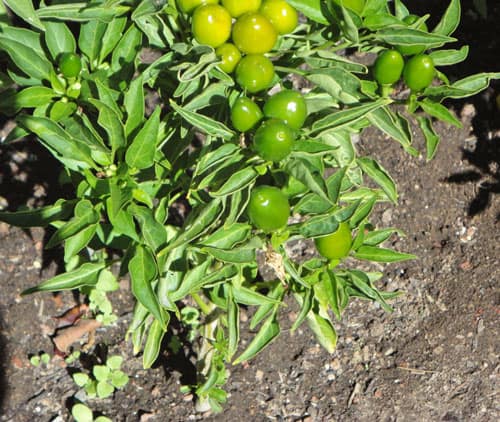













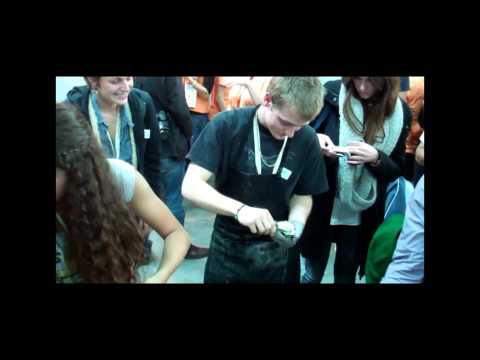
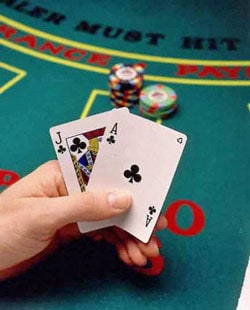

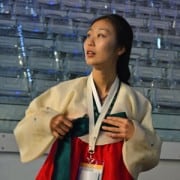
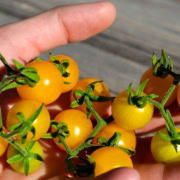
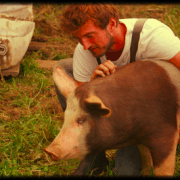
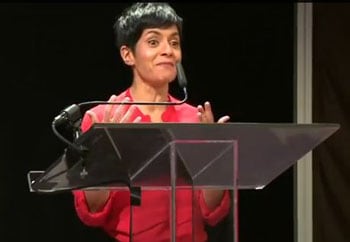
Stephen, Cindy and Eileen,
I just wanted to say I very much enjoy reading you newsletter as always and wanted to say that the pictures you are sharing of Burbank’s home and gardens are really stunning.
I hope that you also were able to get over to his test garden site in neighboring Sebastopol? If you didn’t please be sure and mark that down for your next visit, it is a wonderful magical spot also with loving volunteers and more to see and learn about Burbank and his activities. The preserved park is only a few acres of the original site, but has a unique warm relaxing energy all its own, I had the good fortune of being able to take my Mom there last year for a wonderful fundraiser Mother’s Day tea held in the cute simple period cottage and a guided walking tour of the site and its plants. The cheerful volunteers put on activities, events and hold seasonal plants sales throughout the year and always seem to enjoy the opportunity of sharing their individual enthusiasm for Burbank Lore. It is so peaceful there I just had to take my watercolors into the gardens and paint under the trees on another beautiful day and I have been fortunate to be able to participate in a tree planting ceremony at the site in Mr. Burbank’s honor. Writing about this and reading about your trip makes me want to go again, right away. Little did I know when I passed Burbank’s Home in Santa Rosa today that I would be reading about you visit this evening.
Take care and I look forward to making up my order for seed and to visiting with you and hearing you speak at future Heirloom Festivals.
Best regards or is this better?… ” Best regardening this season,”
Leanna who lives with some of Burbank’s plant and tree creations in Cotati, CA
Thanks for the encouragement Leanna! We didn’t have time to visit his site in Sebastopol, but it is on our list to do. We have heard that it is quite unique and needs some time spent there to fully appreciate it.